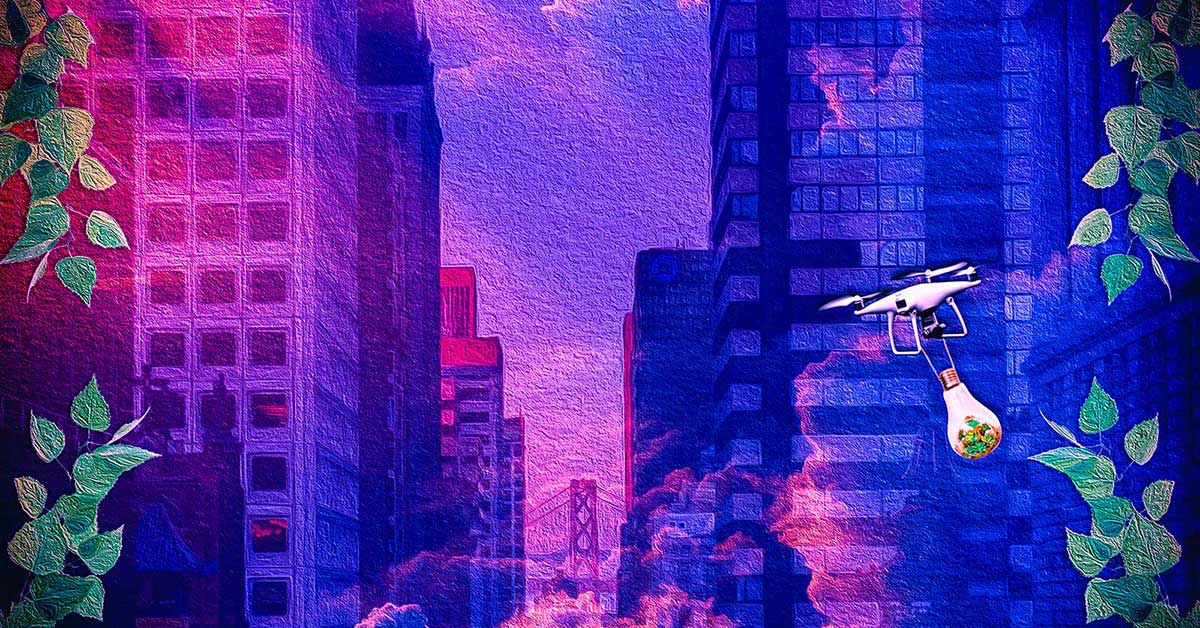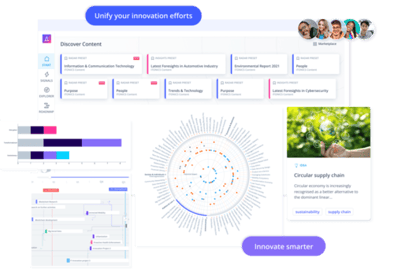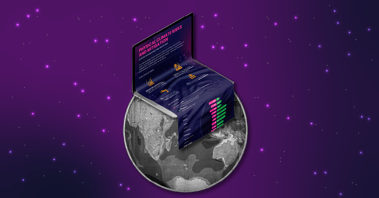There is an inextricable link between foresight and sustainability. Both strive to predict possible future outcomes and, crucially, provide the blueprints for attaining, avoiding, or adapting to these outcomes. For the purposes of growth and success. And where success is enjoyed not by shareholders alone but by all stakeholders, including workers, communities, the environment, and future generations
In the case of foresight, organizations follow a systematic process of gathering future-relevant information through environmental scanning—looking at where change is occurring and how it could potentially impact their environment. Foresight extrapolates this information to develop plausible scenarios, enabling organizations to anticipate and prepare for future opportunities and challenges.
Sustainability is also innately future-oriented. It is the capacity to not only endure or thrive in the present but to ensure that future generations may too thrive. And in the same way that foresight looks at macro-level external factors, sustainability is typically presented across three pillars—economic, environmental, and social—while solutions generally stem from political intervention and technological innovation.
This nexus of prosperity and posterity was the topic of the ITONICS Foresight & Sustainability Summit, held on 23 September 2021, with 700+ participants from more than 40 countries. The event consisted of three roundtable sessions, each of which featured a panel of cross-category experts in the fields of strategic foresight, sustainability management, and ESG (environment, social, and governance) standards.
We've summarized the key findings from all three sessions below.
Green Demanders
As consumers’ sensitivity to the environment exerts a stronger influence on purchase decisions across multiple categories, corporate sustainability has become critical to developing resilience for the long term.
In the Green Demanders roundtable - moderated by Dr. Michael Durst - we were joined by experts Dorothy Shaver from Unilever, Karsten Roth from Hochland, Josef Mair from Stuttgart University, and François Pitti from Bouygues Construction.

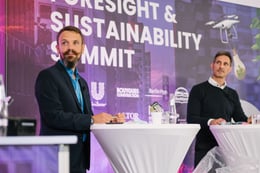
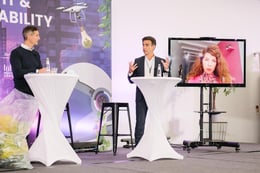
Consumers increasingly expect brands to take an active stance on environmental, social, and political issues. A part of this includes providing consumers with the tools and information to understand their impact and, in turn, make more sustainable choices. As Pitti, Bouygues’ Director of Foresight and Strategic Marketing, explains, “Reactiveness to pressure is one way to get things moving, but decisive impact in urban sustainability can also be achieved by proactiveness of all stakeholders as an ecosystem.”
Sustainable proactiveness requires a high level of transparency and the ability to trace the origin and footprint of consumer products. Central to this is also the accessibility of sustainable choices or alternatives. Without these pieces, consumers often become trapped in the attitude-behavior gap, where values are not easily translated into actions.
Shaver, a registered dietician and Global Sustainability Marketing Lead for Unilever’s Knorr brand, points to our food choices as one area where consumers can make changes in their own lives that contribute to both personal and planetary health. “Food is one of the greatest tools we have to slow species loss, mitigate climate change, reverse soil degradation, stop water scarcity, and avert human health decline. Right now, we have a window of opportunity to address these challenges by growing food better and eating a wider variety.”
She shares Knorr’s Future 50 Foods platform that aims to raise awareness and help people expand their diets beyond the small assortment of staple foods that make up 60% of our plant-based intake—i.e., wheat, rice, and maize. Diversified diets not only improve nutrition but prevent the environmental degradation that comes from monoculture and overfarming.
While responding to rising demand for sustainable choices—or in some cases creating the demand—is vitally important, it must go beyond surface-level. Mair, a Professor of Packaging Technology, explains, “Most sustainable products merely serve as a fig leaf to divert attention from the major causes of environmental destruction and to continue consuming without a guilty conscience; they are only a drop in the ocean."
Real and meaningful change can often involve disrupting the complex balance of existing value chains. And therein lies the challenge. For businesses, sustainability is never only about getting things right, as Roth states. Every change has consequences, some known and some unforeseen. Therefore, navigating change—whether driven by a response to external risk, technological innovation, or internal transformation—requires a systematic approach involving multiple stakeholders and strategic foresight capabilities.
Related Trends:
- Brand Activism
- Pro-Activism
- Easy Ethics
- Local Appreciation
- Sustainable Nourishment
- Packaging Substitutes
- Plastic Pandemic
- Behavior Shaping
Green Economy & Post-Growth
The sustainability imperative is evident, but the roadmap to achieve it is fragmented, contested, and, at best, complicated. While some experts suggest that a green growth economy driven by technological development is the key to sustainable development, others contend that a more radical shift is needed to a post-growth or de-growth economy.
In the second roundtable session Green Economy & Post-Growth, we explored the arguments for and against both scenarios and the implications for business strategy and innovation with thought leaders John Miranda from Intel, Thomas Boermans of E.ON, Alexander Nick from BMW, and Stephan Hankammer from Alanus University.


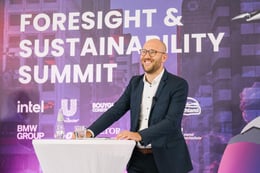
Hankammer, an Assistant Professor for Sustainability Management and Sustainable Entrepreneurship, describes the problem that these scenarios strive to solve. There is an expectation that the economy grows, and material prosperity accrues with each generation. And, this requires intensive energy and resource input, often in the form of fossil fuels, that takes a progressively greater toll on our environment.
There are two potential routes we can take to emerge from this era of unrestrained, unsustainable growth, explains Hankammer. One is green growth or growth optimization, which assumes that decoupling economic activity from resource usage and environmental degradation is possible. Green growth leverages technology, innovation, and new business models to increase resource productivity and energy efficiency. It requires the introduction of different strategies like circular economy, renewable energy, and bioeconomy.
Source: OECD, 2019
The second route is post-growth or de-growth, which views growth with skepticism and assumes that decoupling economic activity absolutely from resource usage and environmental degradation is not possible. Post-growth focuses on reducing production and consumption. For businesses, this means emphasizing sufficiency strategies, e.g., developing long-lasting products, and providing repair and reuse services. However, it remains unclear how post-growth business models would work in the real world on a large scale.
At this point, Dr. Sebastian Knab, moderating the roundtable, posed two questions to the audience and panelists: Which scenario—green growth or post-growth—is necessary to meet the sustainability goals? And what is the likelihood of either of these scenarios unfolding?
While the general consensus suggests that post-growth has greater potential to move the dial toward sustainability, it is green growth that is more plausible and achievable.
Nick, Lead Climate Strategy and ESG Standards at BMW, says, “I strongly believe we need to go all in to achieve a green growth agenda for a sustainable future. It’s good to have those two contrasts. But [...] we really don’t have any imagination how a post-growth society could look like and how the different stakeholder constituencies, starting from the consumer, would be willing to reduce consumption, how [regulators] would be able to limit growth on a global scale, how the capital markets would recognize this post-growth, and how companies [...] would be able to compete while selling less.”
Despite this, there are many lessons to take away from the post-growth scenario. Boermans, Head of Foresight at E.ON, and Miranda, Director of Intel’s Data Center & AI Strategy Office, agree that the urgency of the sustainability imperative requires a combination of green growth and post-growth. In which proportions depend on the will and preparedness of businesses, the leadership of governments, and the demand—or acceptance—of consumers.
Ultimately, as Boermans concludes, whichever scenario we pursue, it is not the new system that is the challenge, but the change to the new system. And it is this transition to sustainability that requires tech and R&D, innovation, and cross-industry collaboration.
Related Trends:
- Localized Production
- Community Stewardship
- Alternative Energy Transition
- Circular Economy
- Automating a Greener World
- Future Farming
- Smart Cities
EU Green Deal & ESG
The EU has introduced a comprehensive Green Deal in its quest to save the climate and biodiversity. It is opting to drive sustainability through a ‘silent revolution’ in which the European Central Banks play a key role.
In the final roundtable of the day, EU Green Deal & ESG - moderated by Prof. Dr. René Rohrbeck, Stephanie Hubold from Altor Equity Partners, Gianfranco Gianfrate from EDHEC Business School, and Leoni Gros from Berlin Hyp discussed the merits of this initiative and the role of finance in driving corporate ESG compliance.
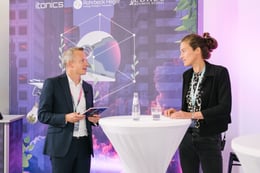
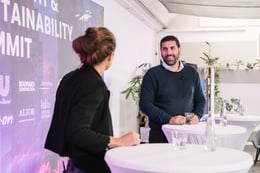
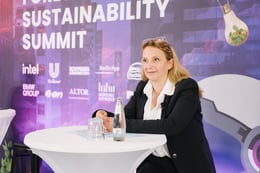
Gianfrate began by explaining, “Finance is mostly interested in risks—in managing risks, in measuring risks, and, of course, in profiting from risks.” He points to the World Economic Forum’s Global Risk Report, in which environmental risks are perceived to be the most likely to occur over the next ten years and represent the greatest impact. These include climate action failure, biodiversity loss, human environmental damage, extreme weather, and natural resource crises.
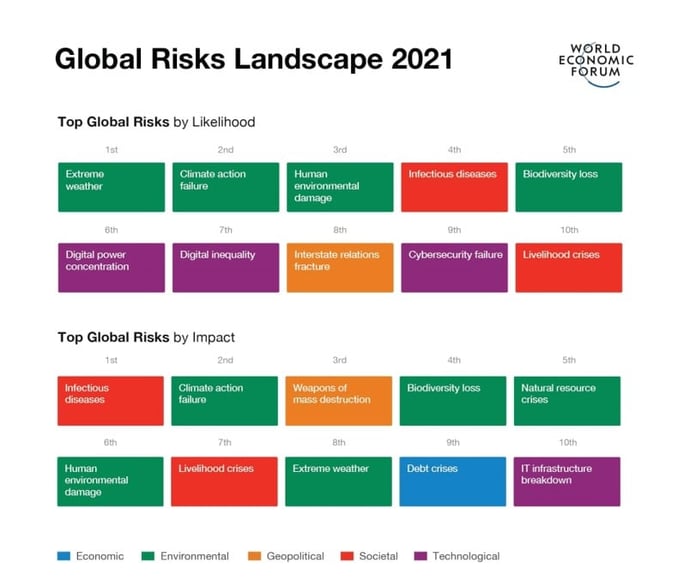
Source: World Economic Forum Global Risks Report, 2021
While these risks are not new, it’s only been recent that sustainable or ESG finance has become mainstream. Demographic shifts and increased dialogue around ESG issues have given rise to a new crop of sustainability-minded consumers and investors who want to make a positive impact beyond their return on investment.
However, the lack of an accounting standard for ESG analysis means that most data is self-reported and unaudited, and efforts can be fragmented or obscured by greenwashing. Furthermore, measuring sustainability is technically complex, e.g., the footprint of an organization may need to include not only direct emissions but emissions along the entire supply chain. Hubold, Head of ESG at Altor Equity Partners, reiterates that sustainability is multi-faceted and therefore difficult to represent as a distinct and straightforward performance indicator.
This is one of the challenges the EU hopes to tackle in its Green Deal. It has introduced the EU taxonomy, a classification system comprising environmentally sustainable economic activities. Investors, companies, and policymakers can use the taxonomy to help direct investments to where they are most needed, prevent greenwashing, and usher in a new era of sustainable finance.
Gros, who is part of the Innovation and Strategy team at Berlin Hyp, explains why it is necessary to prioritize sustainable finance to achieve the goals set forth by the Green Deal: “First of all, of course, it’s the role of the bank to provide the economy with finance. We need money for the transformation. It’s a huge challenge. The EU has published how much money is needed, [€1 trillion in sustainable investments over the next decade] and that cannot just come from public entities. It’s the banks’ role to work with customers and re-orientate their money to sustainable projects, companies, and business models.”
Hubold concludes that we need to view ESG as the new innovation playbook. She recommends building internal ESG capabilities, partnering with external experts, and speaking with investors, banks, employees, and customers—understanding what is important to your stakeholders is a key starting point as organizations commit to the Decade of Action.
Related Trends:
- ESG Investing
- Stakeholder Capitalism
- Radical Transparency
- Carbon as a Currency
- Electromobility
- Beyond Compliance
- Green Skills Gap
- Green and Lean
Navigating sustainability priorities towards 2030
January 2020 marked the start of the Decade of Action: ten years to meet the goals outlined in the UN 2030 Agenda for Sustainable Development in a desperate endeavor to mitigate the impact of climate change.
Underpinning the imperative to take meaningful and decisive action is the latest report from the UN Intergovernmental Panel on Climate Change (IPCC). This report summarizes the scientific basis for climate change. It presents irrefutable evidence to boldly assert the link between human-caused warming and increasingly extreme global weather events.
“This report is a reality check,” said IPCC Working Group Co-Chair Valérie Masson-Delmotte. “We now have a much clearer picture of the past, present, and future climate, which is essential for understanding where we are headed, what can be done, and how we can prepare.”
Masson-Delmotte’s message rings of foresight. We know the problem. We know many of the solutions. It is now the roadmap to which we must direct our collective and urgent attention.
Explore the top 30 sustainability trends & technologies for 2030
From ITONICS trends and technology portfolio, we have identified 30 Sustainability Trends and 30 Sustainability Technologies that are most relevant to the 2030 Agenda for Sustainable Development. We invite you to explore these selections as your organization embarks upon its sustainability journey.
For deeper insights and evidence of how other organizations across industries are acting on sustainability in the real world, and how ITONICS can support your team or organization, get a free demo today!







